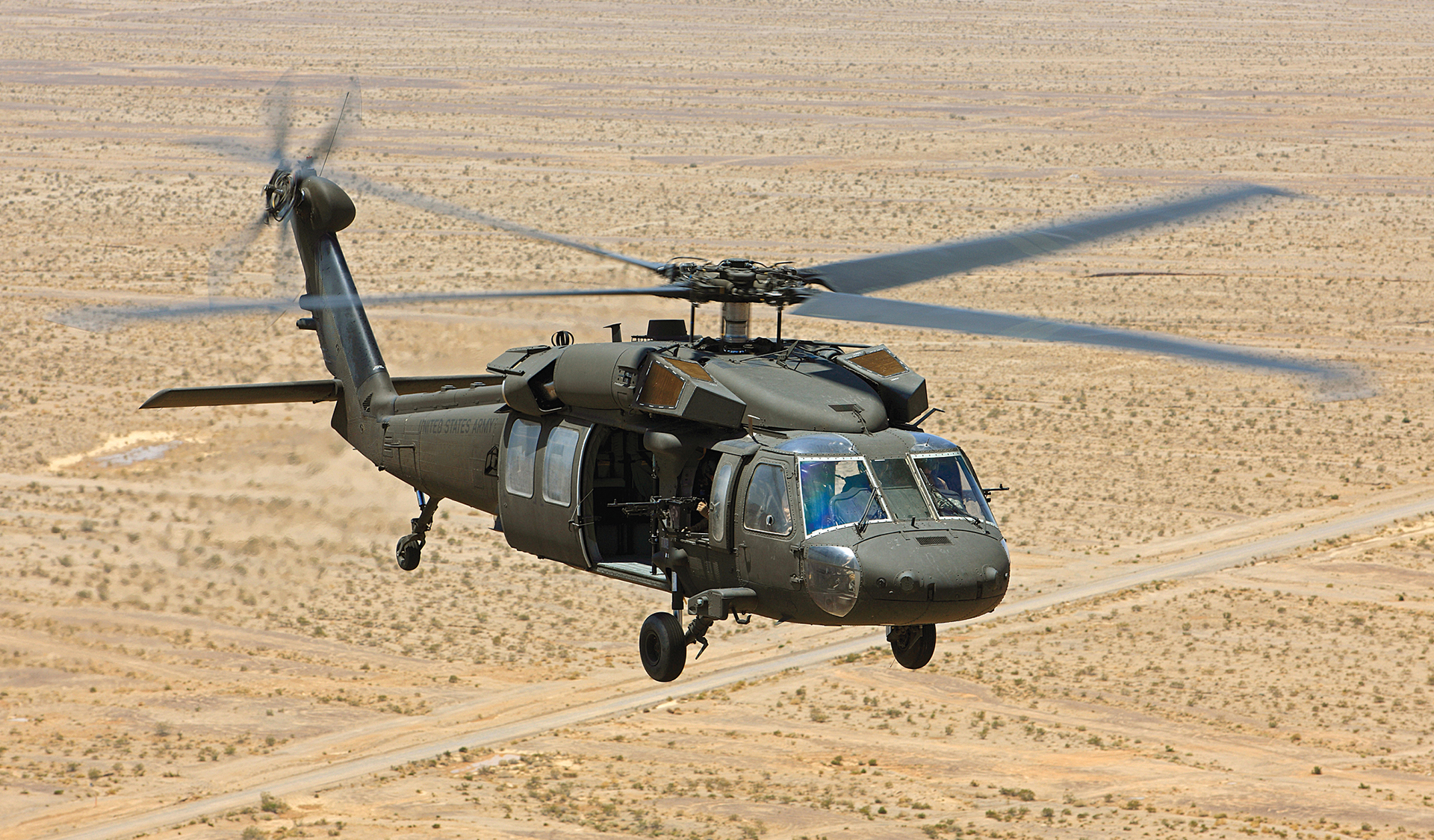UH 60 Helicopter Maintenance: A Comprehensive Guide for Pilots
UH 60 Helicopter Maintenance: A Comprehensive Guide for Pilots
Blog Article
Understanding the Mechanics and Design Behind Uh 60 Helicopters
The UH-60 helicopter, typically called the Black Hawk, stands as a peak of contemporary rotorcraft modern technology, embodying a mix of durable engineering and detailed auto mechanics. From its beginning to its current versions, the advancement of this airplane showcases a combination of technology and functionality. As we peel off back the layers of the UH-60's design, a world of detailed systems and careful engineering emerges. Comprehending the technicians and engineering behind this flexible airplane reveals a realm where accuracy satisfies power, and where each component plays a crucial duty in attaining flight.
Background of UH-60 Helicopters
The background of UH-60 helicopters traces back to the late 1970s when the USA Army sought a versatile and innovative utility helicopter to change its aging fleet. In action to this requirement, the Sikorsky Aircraft Corporation created the UH-60 Black Hawk helicopter. Presented in 1979, the UH-60 promptly ended up being a staple in armed forces operations due to its impressive capabilities.
The UH-60 was made to excel in a selection of goals, consisting of army transportation, clinical emptying, electronic war, and unique procedures. Its capability to adapt to different roles made it a valuable property to the united state Military and various other military pressures around the globe
Over the years, the UH-60 platform has actually undergone several upgrades and variants to improve its performance and maintain speed with developing objective requirements. These helicopters have seen considerable solution in problems such as the Gulf Battle, Afghanistan, and Iraq, showcasing their reliability and convenience in varied functional settings. The UH-60's rich background is a testimony to its enduring heritage as a top utility helicopter.

Engine and Power Equipments
Utilizing advanced propulsion innovation, UH-60 helicopters are outfitted with innovative engine and power systems to guarantee optimal performance and dependability in an array of functional scenarios. The UH-60, generally called the Black Hawk, is powered by 2 General Electric T700-GE-701D engines, each with the ability of providing up to 1,940 shaft horsepower. These turboshaft engines provide the essential thrust for the helicopter to accomplish its goals properly, consisting of troop transportation, medical discharge, and fight assistance.

Blades System and Aerodynamics
Just how do the blades system and aerodynamics of UH-60 helicopters add to their operational effectiveness and trip capacities? The blades system of the UH-60 helicopter plays a crucial role in providing lift and propulsion. The UH-60 features a four-bladed, fully articulated rotor system that permits high maneuverability and stability during flight. click to read This design enables the helicopter to do a vast array of missions, from transport and clinical evacuation to combat procedures.
The rules of aerodynamics additionally play a vital role in the performance of UH-60 helicopters. The streamlined fuselage and rotor blade style decrease drag, allowing the helicopter to achieve greater speeds and far better gas effectiveness. The aerodynamic layout of the UH-60 likewise adds to its capability to operate in varied ecological problems, including high altitudes and hot temperature levels.
Avionics and Trip Control Systems

In its intricate control with the rotor system and aerodynamics of UH-60 helicopters, the avionics and trip control systems develop a crucial network of modern technologies shaping the address airplane's operational capacities. Avionics include the digital systems used for interaction, navigating, and keeping an eye on various aircraft features. In the UH-60, these systems include digital display screens, communication radios, general practitioner navigating, weather condition radar, and auto-pilot systems. These avionics systems offer crucial info to the pilots, boosting situational understanding and ensuring effective and secure operation of the helicopter.
The trip control systems of the UH-60 are accountable for equating the pilot's inputs into the suitable adjustments to the blades system, guaranteeing secure trip and ability to move. These systems are composed of hydraulic actuators, servos, and computer systems that interact to control the primary and tail blades, as well as other flight control surface areas. By specifically taking care of the helicopter's trip dynamics, these systems enable pilots to carry out a variety of missions, from transport and search-and-rescue to deal with procedures, with accuracy and confidence.
Role and Applications in Air Travel
Avionics systems in UH-60 helicopters encompass a range of electronic systems that help in navigating, interaction, tracking, and managing different aircraft functions. These systems include electronic displays, autopilot systems, interaction radios, GPS navigation tools, and weather radar. In addition, these systems incorporate security attributes such as autopilot settings, surface awareness alerting systems, and security augmentation systems to boost the overall security and functional capabilities of the UH-60 helicopters in different goals, including army transport, medical emptying, search and rescue, and aerial firefighting.
Verdict
In conclusion, the UH-60 helicopter is a flexible aircraft with an abundant background and go to my blog progressed engineering. Its engine and power systems, rotor system, the rules of aerodynamics, avionics, and flight control systems all function with each other to make it a reliable and reliable device.
In its detailed control with the rotor system and aerodynamics of UH-60 helicopters, the avionics and trip control systems develop a crucial network of technologies forming the aircraft's operational capacities.The flight control systems of the UH-60 are liable for converting the pilot's inputs into the ideal adjustments to the blades system, ensuring steady trip and ability to move. Avionics systems in UH-60 helicopters include a variety of digital systems that help in navigation, communication, surveillance, and controlling different airplane features. Furthermore, these systems include safety and security attributes such as auto-pilot modes, terrain understanding advising systems, and stability augmentation systems to improve the overall safety and operational abilities of the UH-60 helicopters in different goals, consisting of troop transportation, clinical emptying, search and rescue, and aerial firefighting.
Its engine and power systems, rotor system, the rules of aerodynamics, avionics, and trip control systems all function with each other to make it a reliable and trusted machine.
Report this page